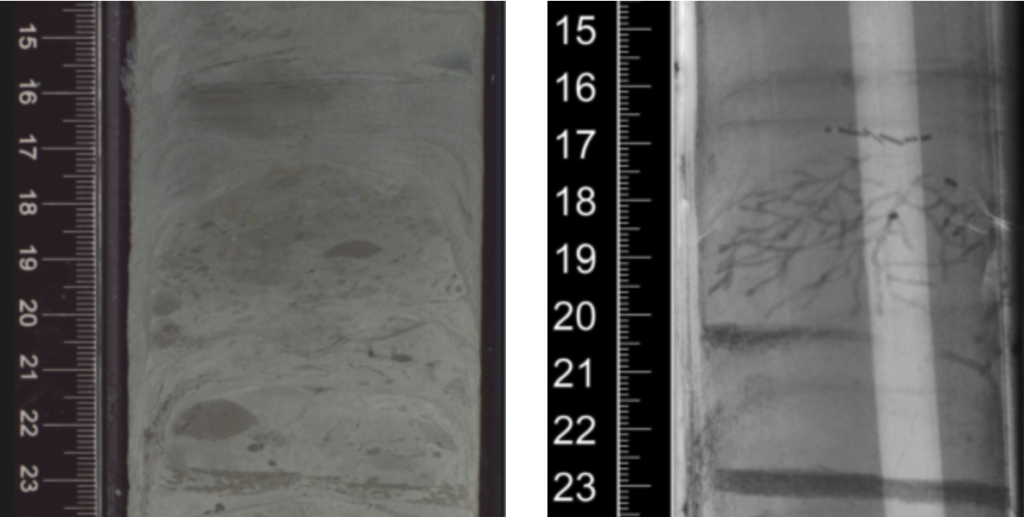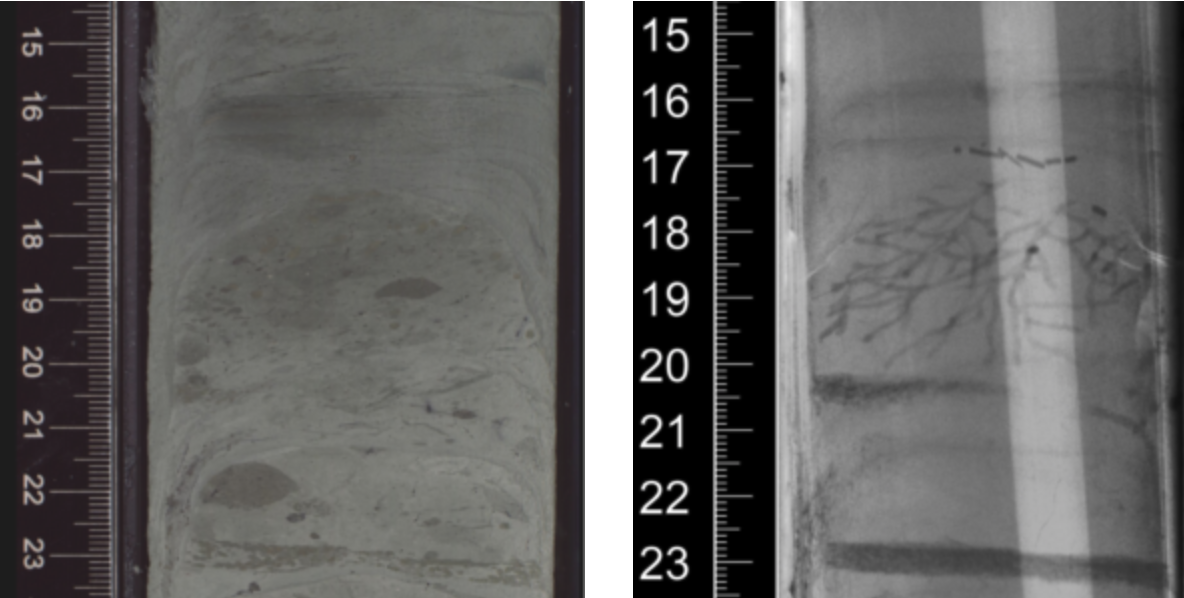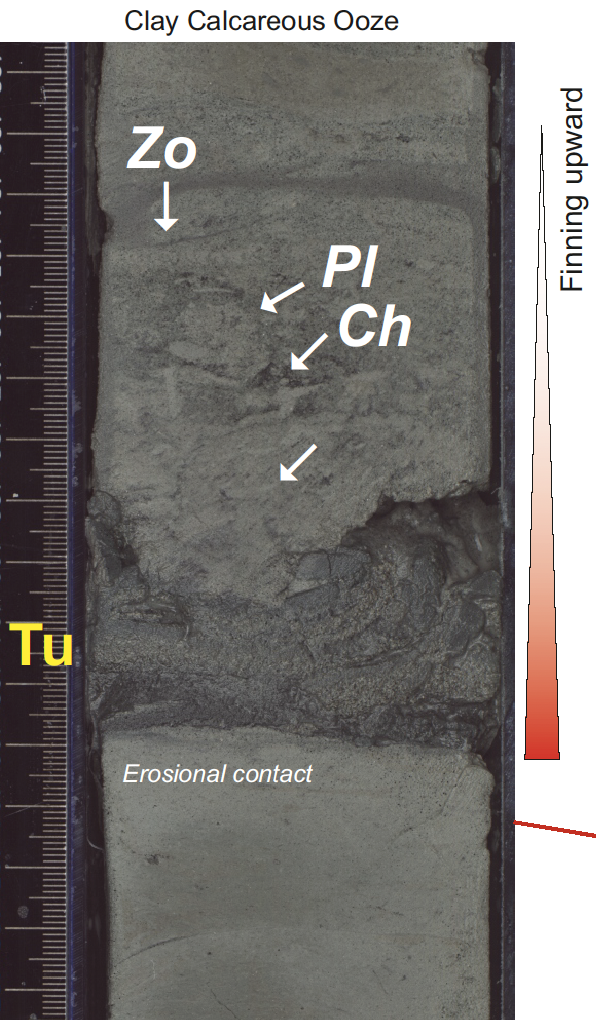
Interesting Finds for Expedition 401
As we enter the final two weeks of JOIDES Resolution Expedition 401, we figured it was time to check in with our science team on their expedition highlights to date.
So, we checked in with some of them asking…
What’s the most interesting thing you’ve found in these cores so far?
“That we can correlate individual sedimentary beds (cycles) 100s of miles between our drill sites. It’s an essential step in finding how the Mediterranean overflow behaved and changed through time.”
-Trevor Williams, EPM

“I think the most interesting thing I’ve seen in our cores so far are pyritized burrows. The thing is you can’t really see what they look like under the sediment unless they show up on the X-ray scan. So, when we look at a core, we might see some nodules of pyrite and some spots indicating a trace fossil, but the X-ray will show the actual burrow network if the trace fossil has been infilled with pyrite or a different sediment than the host material. If the infill is denser than the surrounding sediment (like pyrite), it shows up dark on the X-ray scan. Chondrite is usually visible as spots on the split surface of the core, and occasionally you can see a branch in the trace fossil, but seeing the entire network of the burrow is really cool.”
-Patty Standring, Sedimentologist
“As a geophysicist that has a moderate experience with drilling and coring, what surprised me in the cores overall is how homogeneous and unchanging the sediments look to the eyes. On seismic profiles and other measured physical properties data we see a lot of boundaries and variations that are, most of the time, impossible to detect by the naked eye.”
-Fadl Raad, Physical Properties

“Turbidite sands in U1609, that record the movement of coarse grain material from shallower water into deeper water, by gravity flows.”
-Simon George, Sedimentologist
“The most interesting/exciting thing for me is the cross lamination in the mud.
Conventionally, people generally presumed that for fine-grained (e.g., < 20 micrometer) sediments, due to their rather small size, can be deposited only under rather quiet environments through suspension settling. However, about 15 years ago, flume experiments (the flume lab from which I got my Ph.D.) revealed that fine-grained sediments can also be deposited under running water conditions and that they form the same sedimentary structure (ripples) as sands. In ancient sediments, the mud ripples are expressed as cross lamination, which not only tells us that these fine-grained sediments were deposited under relatively energetic flowing conditions, but this is also the first time (I believe) that mud ripples are documented in the deepwater deposits in the cores.”
-Zhiyang Li, Sedimentologist
“The most interesting thing for me is evidence for an outflow during the salinity crisis – there’s been a lot of debate on this over the past few decades.”
-Udara Amarathunga, Micropaleontologist
“We found a dolostone in the core catcher at the bottom of Hole U1610A! This was our deepest recovered sample and the most different lithology of all the cores. Dolomite might be my favorite rock/mineral. We do not yet fully understand how it forms, even though people have been studying it for over a hundred years. There is a hilarious (but actually good) paper title on the topic: “Failure to Precipitate Dolomite at 25 degrees C from Dilute Solution Despite 1000-Fold Oversaturation after 32 Years”.”
-Clara Blättler, Inorganic Geochemist
“Void space gas. Watching some cores fizz like champagne was spectacular.”
-Sarah Feakins, Organic Geochemist